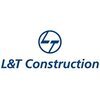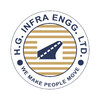Filter interviews by
Hindustan Construction Company Electrical Site Engineer Interview Questions, Process, and Tips
Hindustan Construction Company Electrical Site Engineer Interview Experiences
1 interview found
I applied via Walk-in and was interviewed in Jul 2023. There were 2 interview rounds.
(6 Questions)
- Q1. Define the term electrical engineering
- Ans.
Electrical engineering is a field of engineering that deals with the study and application of electricity, electronics, and electromagnetism.
Involves designing, developing, testing, and supervising the production of electrical equipment and systems
Includes working with power generation, transmission, distribution, and utilization
Incorporates knowledge of electronics, electromagnetism, and computer systems
Applies princi...
- Q2. Define the principle of motor
- Ans.
The principle of motor involves converting electrical energy into mechanical energy to produce motion.
Motors operate based on the principle of electromagnetic induction
Electric current flowing through a wire in a magnetic field creates a force that causes the wire to move
This movement is harnessed to produce mechanical energy and drive motion
Examples include DC motors, AC motors, and stepper motors
- Q3. What is an electric shock
- Ans.
An electric shock is a sudden discharge of electricity through a person's body, causing injury or even death.
An electric shock occurs when a person comes into contact with a source of electricity.
The severity of an electric shock depends on the voltage, current, and duration of exposure.
Symptoms of an electric shock can range from mild tingling to muscle contractions and burns.
Examples of sources of electric shock incl...
- Q4. How can one protect themselves from an electric shock
- Ans.
To protect oneself from an electric shock, one should follow safety precautions and use proper equipment.
Always turn off the power source before working on electrical equipment
Use insulated tools and wear rubber gloves when working with live wires
Avoid working in wet conditions or with wet hands
Install Ground Fault Circuit Interrupters (GFCIs) in areas where water is present
Regularly inspect and maintain electrical equ...
- Q5. What will resistance connected to a source voltage in series do
- Ans.
Resistance connected to a source voltage in series will affect the current flowing through the circuit.
Increases the total resistance in the circuit
Decreases the total current flowing through the circuit
Causes a voltage drop across the resistor
Can be calculated using Ohm's Law: V = I * R
- Q6. Define ohm's low
- Ans.
Ohm's law states that the current flowing through a conductor is directly proportional to the voltage applied across it, and inversely proportional to the resistance of the conductor.
Ohm's law is represented by the formula: V = I * R, where V is the voltage, I is the current, and R is the resistance.
It helps in calculating the current, voltage, or resistance in a circuit when the other two values are known.
Ohm's law is...
(2 Questions)
- Q1. Salery discussion
- Q2. Location discussion
Top trending discussions






Interview questions from similar companies

I appeared for an interview in Aug 2019.
Interview Questionnaire
4 Questions
- Q1. How many types of structure
- Ans.
There are various types of structures, including buildings, bridges, dams, tunnels, and towers.
Structures can be classified based on their purpose, design, and materials used.
Buildings can be further classified into residential, commercial, and industrial structures.
Bridges can be classified into beam, arch, suspension, and cable-stayed bridges.
Dams can be classified into gravity, arch, buttress, and embankment dams.
Tu...
- Q2. What is density
- Ans.
Density is the measure of mass per unit volume of a substance.
It is a physical property of matter.
It is calculated by dividing the mass of a substance by its volume.
Units of density include kg/m³, g/cm³, and lb/ft³.
Density can be used to identify substances and determine their purity.
For example, gold has a density of 19.3 g/cm³, while aluminum has a density of 2.7 g/cm³.
- Q3. How many types of density construction
- Ans.
There are two types of density construction: compacted and loose.
Compacted density construction involves compressing the material to increase its density, such as in road construction.
Loose density construction involves leaving the material in its natural state, such as in landscaping.
The type of density construction used depends on the intended use of the material and the desired level of compaction.
Other factors that...
- Q4. Which types of tests construction joint
- Ans.
Tests for construction joints include visual inspection, water tightness test, and load transfer test.
Visual inspection to check for proper joint alignment and sealant application
Water tightness test to ensure no water leakage through the joint
Load transfer test to verify the joint can handle the intended load
Other tests may include pull-out test, shear test, and compression test
Testing frequency and methods may vary d...
Skills evaluated in this interview

(2 Questions)
- Q1. Size of concrete cube
- Ans.
The size of a concrete cube is typically 150mm x 150mm x 150mm for standard testing purposes.
Standard size for concrete cube is 150mm x 150mm x 150mm
Used for testing the compressive strength of concrete
Other sizes may be used for specific projects or requirements
- Q2. 150mm*150mm*150mm

Site Engineer Interview Questions & Answers
Ahluwalia Contracts Indiaposted on 23 Dec 2022
I applied via Walk-in and was interviewed in Aug 2022. There were 2 interview rounds.

(2 Questions)
- Q1. Steel and SHUTTERING, project management
- Q2. Hook lenght, deduction of steel in bends
Interview Preparation Tips

Site Engineer Interview Questions & Answers
Ahluwalia Contracts Indiaposted on 13 Jul 2023

(3 Questions)
- Q1. About last company works
- Q2. About steel and concrete
- Q3. Handling labours and supervisors
(2 Questions)
- Q1. About last paid salary
- Q2. 1)Marital status 2) accomodation

Interview Questionnaire
3 Questions
- Q1. Type of job currently doing and special aspects of that
- Q2. Where difficulty you face and how you overcome on that
- Q3. What is your innermost desire to be in the next 8 years?


(2 Questions)
- Q1. Basic intro questions
- Q2. How to manage a team
- Ans.
Managing a team involves effective communication, delegation, motivation, and conflict resolution.
Establish clear goals and expectations for the team
Communicate regularly and openly with team members
Delegate tasks based on team members' strengths and skills
Provide feedback and recognition for good work
Address conflicts and issues promptly and fairly
Lead by example and demonstrate a positive attitude
Encourage collaborat...
(1 Question)
- Q1. About salary discussions

I applied via Naukri.com and was interviewed in Jan 2021. There were 3 interview rounds.
Interview Questionnaire
2 Questions
- Q1. Precommissioning test of transformers
- Ans.
Precommissioning tests of transformers ensure proper functioning and safety before energizing.
Visual inspection of transformer and its components
Measurement of insulation resistance
Measurement of winding resistance
Verification of transformer ratio and polarity
Verification of oil level and quality
Testing of protective devices
Verification of grounding
Functional testing of cooling system
Verification of nameplate data
- Q2. 11kv & 33kv overhead power line distribution
- Ans.
11kv & 33kv overhead power line distribution
11kv and 33kv are common voltage levels for overhead power lines
Overhead power lines are used to distribute electricity from power stations to consumers
The voltage level determines the distance the power can be transmitted and the size of the conductors needed
Proper insulation and grounding is important for safety
Maintenance and inspection of the lines is necessary to ensure
Interview Preparation Tips

I appeared for an interview before Apr 2024, where I was asked the following questions.
- Q1. They are asked about pile foundation
- Q2. What is the 12 mm dia length of weight 1 m
- Q3. Types of foundation

(2 Questions)
- Q1. Which are the different types of slabs
- Ans.
Different types of slabs include one-way slab, two-way slab, flat slab, ribbed slab, waffle slab, and hollow core slab.
One-way slab: supported on two opposite sides and bends in only one direction
Two-way slab: supported on all four sides and bends in two directions
Flat slab: without beams and supported directly on columns
Ribbed slab: with ribs on the underside for added strength and reduced weight
Waffle slab: with grid...
- Q2. What are the different types of slabs foundation
- Ans.
Different types of slabs foundation include raft, mat, flat plate, and waffle slab foundations.
Raft foundation: a solid reinforced concrete slab that covers the entire area under a building
Mat foundation: a thick concrete slab used to support heavy structures or buildings
Flat plate foundation: a simple and economical type of foundation with a uniform thickness
Waffle slab foundation: a type of foundation with grid-like
Interview Preparation Tips
Hindustan Construction Company Interview FAQs
Tell us how to improve this page.
Hindustan Construction Company Interviews By Designations
- Hindustan Construction Company Site Engineer Interview Questions
- Hindustan Construction Company Civil Site Engineer Interview Questions
- Hindustan Construction Company Senior Civil Engineer Interview Questions
- Hindustan Construction Company Quality Engineer Interview Questions
- Hindustan Construction Company Civil Site Engineer & Site Incharge Interview Questions
- Hindustan Construction Company HSE Engineer Interview Questions
- Hindustan Construction Company Lab Incharge Interview Questions
- Hindustan Construction Company Mechanical Engineer Interview Questions
- Show more
Interview Questions for Popular Designations
- Site Engineer Interview Questions
- Civil Site Engineer Interview Questions
- Site Supervisor Interview Questions
- Site Incharge Interview Questions
- Senior Site Engineer Interview Questions
- Civil Site Supervisor Interview Questions
- Site Engineer Mechanical Interview Questions
- Senior Civil Site Engineer Interview Questions
- Show more
Hindustan Construction Company Electrical Site Engineer Interview Process
based on 1 interview
Interview experience
Interview Questions from Similar Companies

Hindustan Construction Company Electrical Site Engineer Reviews and Ratings
based on 1 review
Rating in categories
|
Civil Site Engineer
215
salaries
| ₹1.8 L/yr - ₹7.2 L/yr |
|
Site Engineer
209
salaries
| ₹2.7 L/yr - ₹7.2 L/yr |
|
Quantity Surveyor
54
salaries
| ₹3 L/yr - ₹7.2 L/yr |
|
Senior Planning Engineer
53
salaries
| ₹5 L/yr - ₹8.6 L/yr |
|
Mechanical Engineer
49
salaries
| ₹2 L/yr - ₹6.8 L/yr |

L&T Construction

Simplex Infrastructures

ITD Cementation India

Ashoka Buildcon
- Home >
- Interviews >
- Hindustan Construction Company Interview Questions >
- Hindustan Construction Company Electrical Site Engineer Interview Questions












